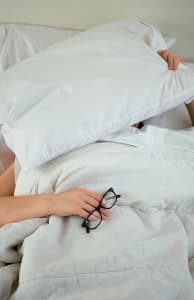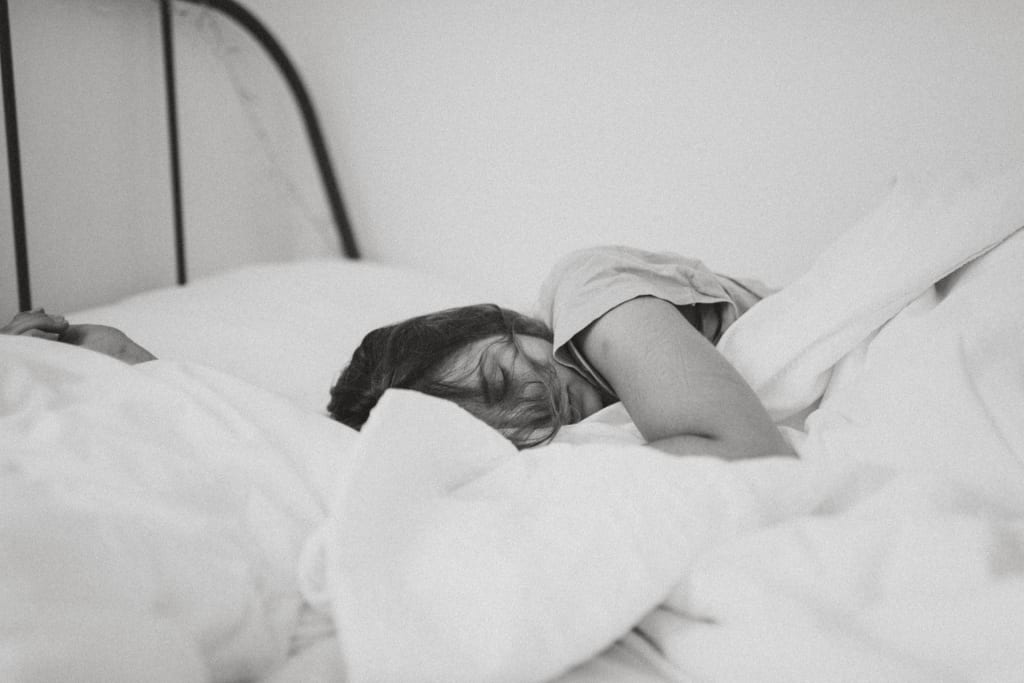
Sleep apnea (OSA) is a relatively common sleep disorder that affects sleepers’ airways and breathing during the night. It is well known for producing loud, labored breathing and as a result, many people mistakenly confuse sleep apnea for a simple case of heavy snoring. Often times it will be a partner who brings the symptoms of sleep apnea to the attention of a sleeper.
While they can both seem the same from the outside looking in, heavy snoring is only one component of bigger physiological issues at play with sleep apnea. Sleep apnea is a much more serious disorder that can have serious consequences for the long term health of any sleeper afflicted with the condition.
The good news is that sleep researchers and doctors have developed effective treatments for sleep apnea that allow individuals an opportunity to manage the disorder and lead a normal life.
Keep reading to learn about what sleep apnea looks like, and what people are doing to keep the condition from affecting their ability to sleep.
What Sleep Apnea looks like
An apnea refers to a situation where a person temporarily stops breathing, and oxygen does not flow properly through the blood as a result. Sleep apnea occurs when a person experiences an apnea event in the course of sleeping, which can happen several times during the night. The causes of this vary among the three main types of sleep apnea:
- Obstructive Sleep Apnea (OSA): OSA is a specific situation where apnea arises due to airway obstruction during sleep. Muscles in the throat will slowly relax when a person falls asleep, resulting in more obstruction with each subsequent breath taken. Eventually, the upper airway will close completely and breathing stops entirely. The brain will react to the lack of oxygen by sending adrenaline throughout the body, waking up in the process. Breathing will resume normally at this point, until the individual falls asleep again and the cycle repeats up to 100 times in the night. OSA is the most common form of sleep apnea, affecting over 25 million U.S adults in 2014.
- Central Sleep Apnea (CSA): CSA is a more rare form of sleep apnea in which the body regularly stops breathing during sleep as a result of improper brain signaling to the muscles involved in breathing. CSA usually arises as a consequence of other medical conditions such as congestive heart failure, stroke, and severe kidney disease. Certain medications have been known to induce CSA as well, as has sleeping at high altitudes.
- Complex Sleep Apnea Syndrome (CSAS): CSAS is the rarest of all sleep apneas, occurring as a combination between OSA and CSA. CSAS is diagnosed when apnea still happens after medical intervention prevents obstruction of the airway, and there is no clear cause for CSA.
All three types of sleep apnea severely disrupt healthy sleep patterns by causing sufferers to awaken up to 100 times during the night. Though these periods of sudden alertness may only last a few moments, they are massively disruptive to the sleep cycle.
Symptoms
The symptoms of sleep apnea can be divided into two categories. The first is nighttime behaviors, which are more often than not reported to sufferers of sleep apnea by partners or other people who observe them during the night. The Mayo Clinic lists the most common of those as:
- Extremely loud snoring: This usually gets louder and louder with each successive breath after a sleep apnea sufferer falls asleep, culminating in their sudden awakening when their airway closes completely. At that time they will fall back asleep and resume the cycle.
- Short moments of awakening: Sufferers may roll over, fidget or simply lay motionless before returning to sleep. They will usually have no memory of this incident, which can happen up to 100 times during the course of a typical 8-hour sleep.
- Gasping for air in the middle of sleep: This can occur at the moment a sufferer wakes up momentarily. After breath returns to normal they will fall back asleep.
The other symptoms of sleep apnea are felt while awake. Many of them are a consequence of not getting enough sleep. These symptoms include:
- Daytime drowsiness
- Difficulty staying focused or motivated
- Decreased sex drive
- Sudden and unexpected mood changes
- Sleep anxiety or insomnia caused by the fear of being unable to get enough sleep
- Waking up with “cottonmouth,” or an excessively dry mouth
- Mild to severe morning headaches
- Elevated blood pressure readings
Most of these symptoms are relatively short term and will dissipate when an individual’s sleep cycle returns to normal. However, failing to address sleep apnea for a long time can cause more serious consequences as a result of long term sleep loss.

Treating and managing sleep apnea
There are options for people with sleep apnea. Doctors may recommend any of the following treatments for the condition, depending on its severity and underlying cause:
- Positive Airway Pressure Devices (PAP): This treatment is specifically used to treat OSA. PAP devices are machines that are inserted into the airway of a sleep apnea sufferer in order to provide a flow of air which prevents the airway from ever closing completely during the night. Some users complain that these devices are uncomfortable, and require PAP based therapy to overcome their distaste of using them.
- Oral Appliances: The most common oral appliance for treating sleep apnea is a specialized mouth guard called a Mandibular Advancement Devices (MADs). When wearing one of these while you sleep the mouth guard moves your lower jaw slightly forward, which allows your airway to remain open throughout the night.
- Treating other medical conditions: Medical conditions such as heart problems, problems with obesity and others can make sleep apnea much worse. This is especially true of CSA. Seeking treatment for these underlying conditions can be incredibly helpful in reducing the effects of sleep apnea.
- Oxygen therapy: In some cases, supplemental oxygen can be effective in reducing sleep apnea. There are several different medical devices that can deliver oxygen to your lungs while you sleep.
- Medication: Doctors will often examine which medicines you are taking when sleep apnea occurs. Opioids have been known to cause CSA, and should be examined closely. Doctors may also prescribe new medications such as acetazolamide and theophylline, which have proven effective in treating sleep apnea.
Leave a Reply